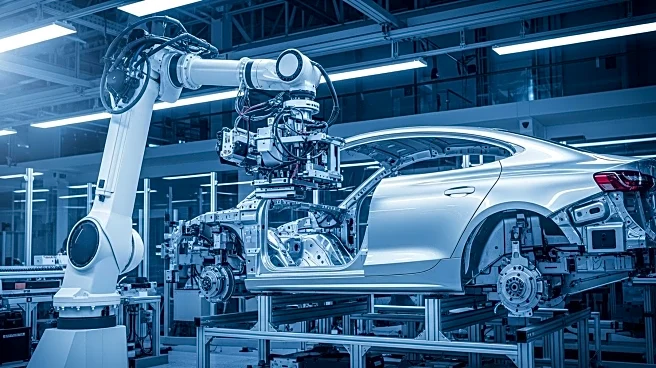What's Happening?
Entergy has launched a $37 billion grid modernization plan aimed at enhancing infrastructure resilience in the Gulf Coast region, particularly in Louisiana. This initiative includes upgrading 730 miles of distribution and transmission lines and reinforcing 20,300 poles to withstand winds up to 150 mph. The Jefferson Parish project, a $233 million investment over five years, is a key component, expected to prevent $1.2 billion in future storm restoration costs. These efforts are part of Louisiana's broader strategy to diversify its economy post-Katrina, moving away from oil dependency towards technology and clean energy sectors.
Why It's Important?
The grid modernization plan is crucial for reducing downtime for businesses and households during storms, thereby attracting industries that rely on stable power, such as data centers. Louisiana's shift towards clean energy and technology is expected to create 100,000 non-utility jobs and attract $100 billion in industrial investment by 2030. This economic diversification is vital for the state's long-term growth, especially as the energy sector currently contributes 25% of Louisiana's economic output. The initiative also highlights the importance of infrastructure resilience in driving economic transformation and supporting emerging industries.
What's Next?
Entergy's ongoing investments in grid resilience are likely to continue attracting high-value industries to Louisiana, further boosting job creation and economic growth. The state's focus on clean energy and technology will likely lead to more projects like the Delta Blues Advanced Power Station, positioning Louisiana as a leader in sustainable infrastructure. Additionally, nonprofit housing recovery programs will play a critical role in ensuring equitable recovery and community resilience, addressing challenges such as racial income disparities.
Beyond the Headlines
The success of Entergy's grid modernization plan and Louisiana's economic diversification efforts could serve as a model for other regions facing similar climate-related challenges. The integration of social infrastructure, such as community ties and collaboration, into post-disaster planning underscores the importance of inclusive recovery strategies. As climate risks escalate, regions prioritizing adaptive infrastructure and community-driven solutions are likely to outperform economically.












